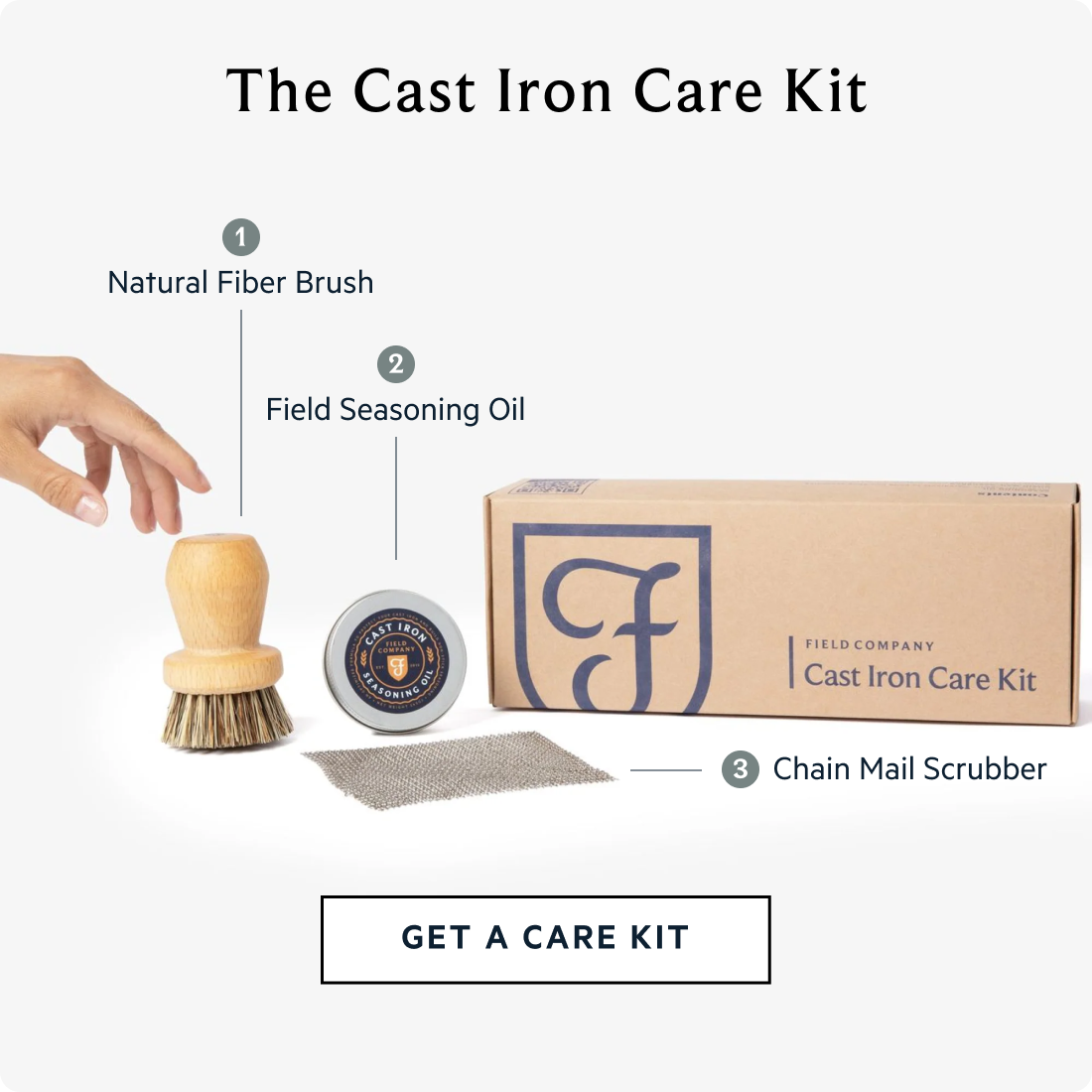There's a specific kind of satisfaction that comes from solving a small, everyday problem. One that's been nagging at you for years but never quite urgent enough to do anything about. For me, it was my chain mail scrubber. I use it nearly every day, but I could never find the right place to keep it.
My hunch was that others might feel the same. Customers sometimes ask why we don’t put a ring on on the scrubbers, something by which it could be hung.
The answer: any metal in a shape other than the chain mail links could easily scratch your seasoning. It’s also why we don’t include any Field branding on the scrubber (even though, I suppose it would be better for business).
So then how best to store the scrubber and keep it within reach?








